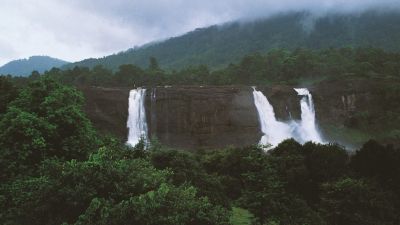Unearthing Kerala’s Megalithic Heritage: Ancient Sites and Discoveries
Kerala, often referred to as "God's Own Country," is a land of immense natural beauty, rich culture, and fascinating history. While most tourists flock to this southern Indian state for its pristine beaches, backwaters, and lush greenery, Kerala also holds a hidden treasure trove of ancient megalithic heritage that is waiting to be explored.
The Megalithic Era
The megalithic era, which began around 3000 BCE and lasted until around 500 BCE, was a period characterized by the construction of massive stone structures. These structures were created for various purposes such as burial sites, religious rituals, and community gatherings. The megalithic people of Kerala left behind a legacy of impressive stone monuments that provide a fascinating glimpse into their ancient civilization.
1. Kudakkallu Parambu
Located in Thrissur district, Kudakkallu Parambu is a megalithic site that features a collection of stone burial monuments known as "kudakkallus." These dolmen-like structures are made up of large upright stones supporting a massive flat stone slab on top. The site is believed to date back to around the Iron Age and provides valuable insights into the burial customs and traditions of the megalithic people.
2. Rock Art Sites at Edakkal
One of the most significant archaeological sites in Kerala is the Edakkal Caves in Wayanad district. These caves are renowned for their unique rock engravings, dating back to the Neolithic age. The engravings depict various scenes of daily life, including hunting, dancing, and rituals, giving us a fascinating glimpse into the lives of the ancient inhabitants of Kerala. Exploring the Edakkal Caves is like stepping back in time and experiencing history firsthand.
3. Kizhakkumbhagom Stone Circle
The Kizhakkumbhagom Stone Circle, located in Ernakulam district, is a megalithic site that was discovered quite recently. This circular arrangement of upright stone slabs with a central stone burial pit is believed to be around 2,000 years old. The site is of immense archaeological significance as it provides evidence of an advanced megalithic culture that thrived in Kerala during ancient times.
4. Anjuthengu Dolmens
Anjuthengu, situated near Thiruvananthapuram, is home to a series of megalithic dolmens. These dolmens are burial chambers made up of large stone slabs arranged in a circular or rectangular fashion. The site is believed to have served as a burial ground for the ancient inhabitants of the region. Exploring the Anjuthengu Dolmens is like stepping back in time and unraveling the mysteries of the past.
5. Marayur Dolmens
Marayur, located in Idukki district, is known for its vast expanse of prehistoric dolmens. These dolmens are scattered across the region and range in size from small chambers to large structures. Some of these dolmens are estimated to be around 5,000 years old, making them one of the oldest megalithic sites in Kerala. The Marayur Dolmens provide a fascinating glimpse into the ancient megalithic culture and its burial practices.
Conclusion
Kerala's megalithic heritage is a testament to the ancient civilization that once thrived in the region. Exploring these ancient sites and discoveries allows us to connect with our roots and gain a deeper understanding of Kerala's rich history. From the majestic Kudakkallu Parambu to the captivating Edakkal Rock Art, each site offers a unique and intriguing experience. So, step off the beaten path, unearth Kerala's megalithic heritage, and embark on a journey through time.
Don't forget to share this article with your fellow travel enthusiasts and history buffs!
Disclaimer : The information provided in this blog is for general informational purposes only. While we strive to keep the content accurate and updated, TravelSetu assumes no liability for errors or omissions. If you believe any part of this blog infringes your rights or causes concern, please notify us immediately at info[at]travelsetu[dot]com so that appropriate action can be taken.






















